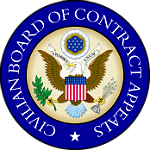
Civilian Board of Contract Appeals
Types of Alternative Dispute Resolution Procedures
ADR procedures should be tailored to suit the parties' particular needs. Any procedure or a combination of procedures that brings parties together in settlement or partial settlement of their dispute is a good procedure. When the parties structure the ADR procedures to be used in their case, they should focus on the role the ADR Neutral might play. The Neutral can assist in defining that role as part of an ADR Agreement.
The following are examples of ADR procedures that could be used by agreement between the parties and the ADR Neutral.
Facilitative Mediation. Mediations begin with a joint session at which the parties make informal presentations to one another and the ADR Neutral regarding the facts and circumstances giving rise to the issues in dispute as well as an explanation of their respective legal position. The ADR Neutral, as mediator, aids the parties in settling their case, by meeting with each party separately in confidential sessions for the purpose of facilitating the formulation and transmission of settlement offers.
Evaluative Mediation. In addition to engaging in facilitative mediation, as described above, the ADR Neutral, as mediator, may also discuss informally with the parties, either jointly or in private sessions, the strengths and weaknesses of their respective positions.
Mini-Trial. A mini-trial is a more formal procedure in which the parties make abbreviated presentations to an ADR Neutral who sits with the parties' designated principal representatives as a mini-trial panel to hear and evaluate evidence relating to an issue in dispute. The Neutral may thereafter meet with the principal representatives to attempt to mediate a settlement. The mini-trial process may also result in the Neutral's issuance of a non-binding advisory opinion or binding decision.
Non-Binding Advisory Opinion. The parties present to the ADR Neutral information on which the Neutral relies to issue a non-binding, advisory opinion on the merits of the case. The opinion may be delivered to the parties either orally or in writing. The manner in which the information is presented will vary from case to case. Presentations may range from an informal proffer of evidence together with limited argument from the parties to a more formal presentation, with oral testimony and documentary evidence and argument from counsel, such as may be done in a mini-trial.
Summary Binding Decision. This is a binding ADR procedure in which, the ADR Neutral renders a brief, written decision. The written decision is binding, non-precedential, and non-appealable. As in a procedure under which the Neutral provides a non-binding advisory opinion, the manner in which information is presented for a summary binding decision may vary.
Parties considering ADR are encouraged to adapt for their purposes any of these ADR models.